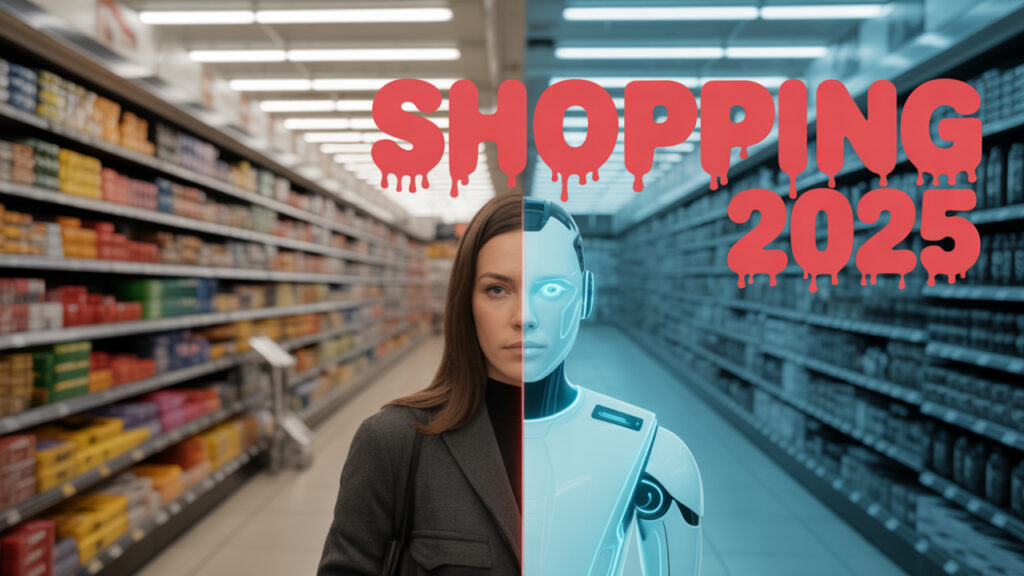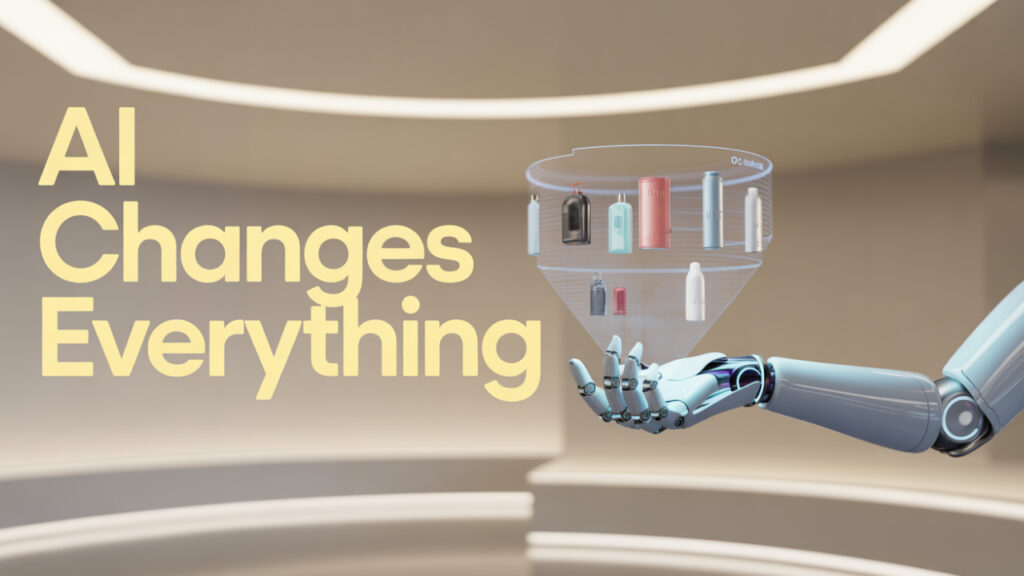How AI Is Transforming Shopping Habits in 2025 (Part 2):
Deep Dive into Consumer Psychology, Sector-Specific Trends & the Future of Retail
Catch up on earlier parts:
• Part 1 – How AI Is Transforming Shopping Habits
Introduction
In Part 1, we explored how AI is reshaping the overall shopping journey—covering technologies like machine learning, recommendation engines, and voice/visual search. But AI’s influence runs even deeper. Beyond convenience and personalization, it’s transforming the psychology behind buying, the structure of industries, and even the role of physical stores.
This second part dives into sector-specific transformations, advanced AI-driven shopping behaviors, and the ethical + futuristic implications that will define retail for the next decade.
AI and Consumer Psychology: The Subconscious Side of Shopping
AI doesn’t just show you products—it learns why you buy.
- Behavioral Prediction
Algorithms now anticipate moods and intent. For example, AI can detect stress from typing speed or late-night browsing and recommend comfort products like snacks or skincare. - Hyper-Personalized Nudging
Micro-moments are being engineered with AI. If you often abandon carts, the system might strategically wait 48 hours before sending a discount email—timed to your highest probability of conversion. - Emotion-Driven Shopping
Sentiment analysis allows AI to adjust product visuals and ad tones. If you’re browsing tech after reading negative news, the AI might show uplifting copy like “Boost your productivity with ease.”
Sector-Specific Transformations with AI
Different industries are adopting AI in unique ways:
1. Fashion & Apparel
- AI-Powered Virtual Try-Ons: Brands like Zara and Nike are moving toward AI-generated body scans, letting customers try clothes on 3D avatars.
- Trend Forecasting: AI predicts upcoming fashion trends months in advance by scanning social media, music, and cultural data.
2. Grocery & Everyday Shopping
- Smart Carts & Automated Replenishment: Trolleys embedded with computer vision scan items instantly, while AI platforms like Instacart predict weekly household needs.
- Dynamic Shelf Management: Cameras + AI keep track of freshness and stock, reducing waste.
3. Luxury & Lifestyle
- AI Concierge Services: Premium brands are using AI to give one-on-one “digital stylist” experiences.
- Scarcity Algorithms: AI helps craft exclusivity by releasing limited editions based on predictive demand curves.
4. Electronics & Gadgets
- Voice-Based Comparison Engines: Instead of browsing, users ask: “Which phone under $600 has the best camera?” AI delivers curated options.
- Predictive Maintenance: Devices themselves may suggest add-ons or replacements before failure.
The Future of Physical Stores in an AI-First Era
Many predicted physical stores would vanish—but AI is giving them a new identity:
- Experience Hubs: Stores will act less as inventory warehouses and more as interactive experience zones with AR/VR tryouts.
- Cashierless Shopping: Amazon Go-style automated checkouts will expand to malls, supermarkets, and even boutique shops.
- AI-Powered Assistants In-Store: Smart mirrors, shelf robots, and real-time inventory apps will replace traditional human help.
AI + Sustainability in Shopping
AI isn’t just boosting sales—it’s driving eco-conscious choices:
- Carbon-Aware Recommendations: Some platforms will recommend sustainable products based on footprint scores.
- Waste Reduction: Predictive analytics help retailers minimize unsold inventory, especially in perishable goods.
- Second-Hand AI Markets: Algorithms are fueling recommerce by matching sellers and buyers of pre-owned items (e.g., fashion resale apps powered by AI).
Ethical Challenges in 2025 and Beyond
While AI is making shopping smarter, it’s also raising critical debates:
- AI Addiction & Over-Spending
Hyper-targeted nudges risk turning consumers into compulsive buyers. - Data Sovereignty
Who owns shopping behavior data—the consumer, the retailer, or the AI provider? - Algorithmic Transparency
If AI hides cheaper alternatives to push premium options, where does ethical responsibility lie?
Futuristic Scenarios: What’s Next?
- Predictive Subscriptions
Groceries, clothes, or health products delivered before you realize you’re running low. - Fully Virtual Shopping Cities
Imagine an AI-powered metaverse mall where avatars shop, socialize, and interact in real time. - AI Shopping Companions
Instead of browsing, you’ll have a persistent AI “co-shopper” that knows your taste, budget, and goals—curating options across all platforms.
How Retailers Can Prepare for the Next Phase
- Adopt Emotion AI: Understand not just what customers want, but why they want it.
- Invest in Cross-Channel AI: Synchronize experiences across online, mobile, voice, and physical outlets.
- Build Trust Through Transparency: Give customers visibility into how their data is used and recommended.
- Balance AI with Human Touch: While AI can scale personalization, humans still drive brand loyalty.
Conclusion
Part 1 highlighted the technologies and benefits of AI in retail. Part 2 takes us deeper—showing how AI is reshaping psychology, sustainability, and the very concept of a “store.”
As we move forward, AI will not just transform how we shop, but how we live, consume, and connect with brands. The winners of this new era will be those retailers who combine intelligent automation with ethical responsibility and genuine human value.
The AI-driven shopping revolution is not coming—it’s already here. The only question is: are you adapting fast enough?



